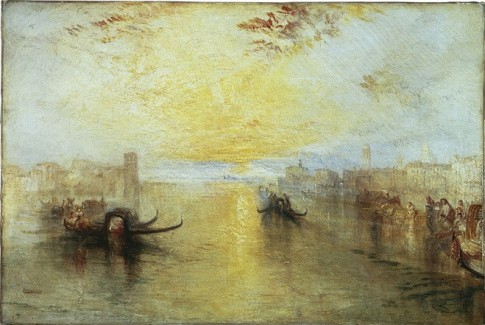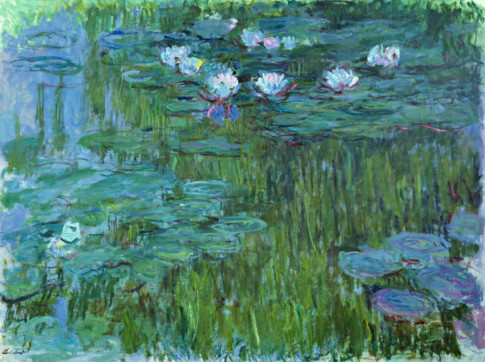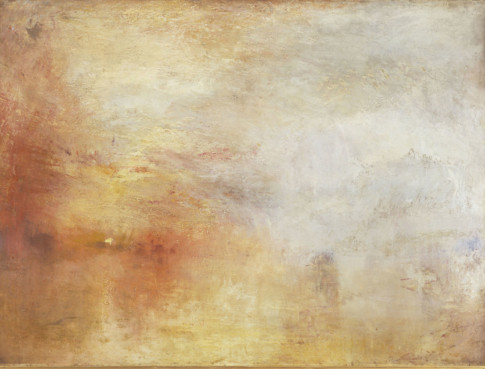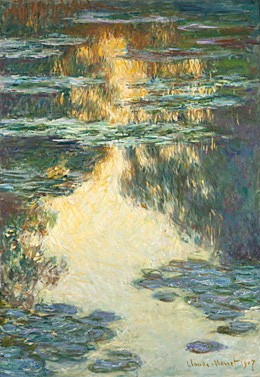
J.M.W. Turner, St Benedetto, Looking towards Fusina, exhibited, 1843 © Tate, London 2011
J.M.W. Turner
Throughout the 1790s, Turner travelled around Britain, studying the shifting countryside, making pencil sketches and noting down colours. The actual paintings were produced mainly in the studio, based on the sketches and drawings he had made on site. He was fascinated by dramatic scenes such as shipwrecks, fires and meteorological phenomena. When the Houses of Parliament were on fire in 1834, Turner was there to watch the catastrophe. He then used the experience in a couple of paintings and a series of watercolours. He also travelled around Europe, beginning with France and Switzerland, but finally ventured on to Italy, which he visited for the first time in 1819. Turner returned several times to Venice, where he found the settings for some of his most famous paintings.
Turner was also a skilful graphic artist and produced numerous series of engravings. In 1806, he embarked on his Liber Studiorum, a set of 71 engravings based loosely on Claude Lorrain’s collection Liber Veritatis. Here, Turner portrayed different kinds of landscape methodically, categorised into types such as Pastoral, Marine or Architecture.
Turner’s completed paintings are rarely pure landscapes. They often include human figures relating to myths or dramatic historic events. By portraying fallen empires such as Rome or Carthage, Turner was also commenting on contemporary Britain, which was at war against Napoleon in the early 19th century. He was deeply committed to social issues and critical to the moral decay he believed to be taking place in his native country during the war. The human figures appear small and insignificant in Turner’s monumental landscapes. His intention was that the viewer should be overcome with a strong sense of admiration and respect for the magnificence of nature. This was referred to as the Sublime, a desirable quality in the romantic aesthetic tradition.
In the 1830s, Turner was profoundly affected by several deaths among his family and friends, and his letters and notes reveal a growing preoccupation with his own mortality. In connection with the death of a close friend, Turner painted Peace – Burial at Sea, in which he processed his loss. The painting was exhibited at the Royal Academy, together with War – The Exile and the Rock Limpet, which portrays Napoleon on St Helena.
From the 1830s, Turner often completed his works before an audience, as a performance or show. This could help to explain the existence of so many unfinished canvases at his death, canvases that are now regarded as finished works. These paintings are seen to preface impressionism, or even abstract expressionism, even though the artist himself never had such intentions.
Light is essential to Turner’s oeuvre, and in his late works he excluded detail in favour of the pure effect of light reflected on water and skies. Just before he died in 1851, Turner is said to have uttered the words, “The sun is God.”





